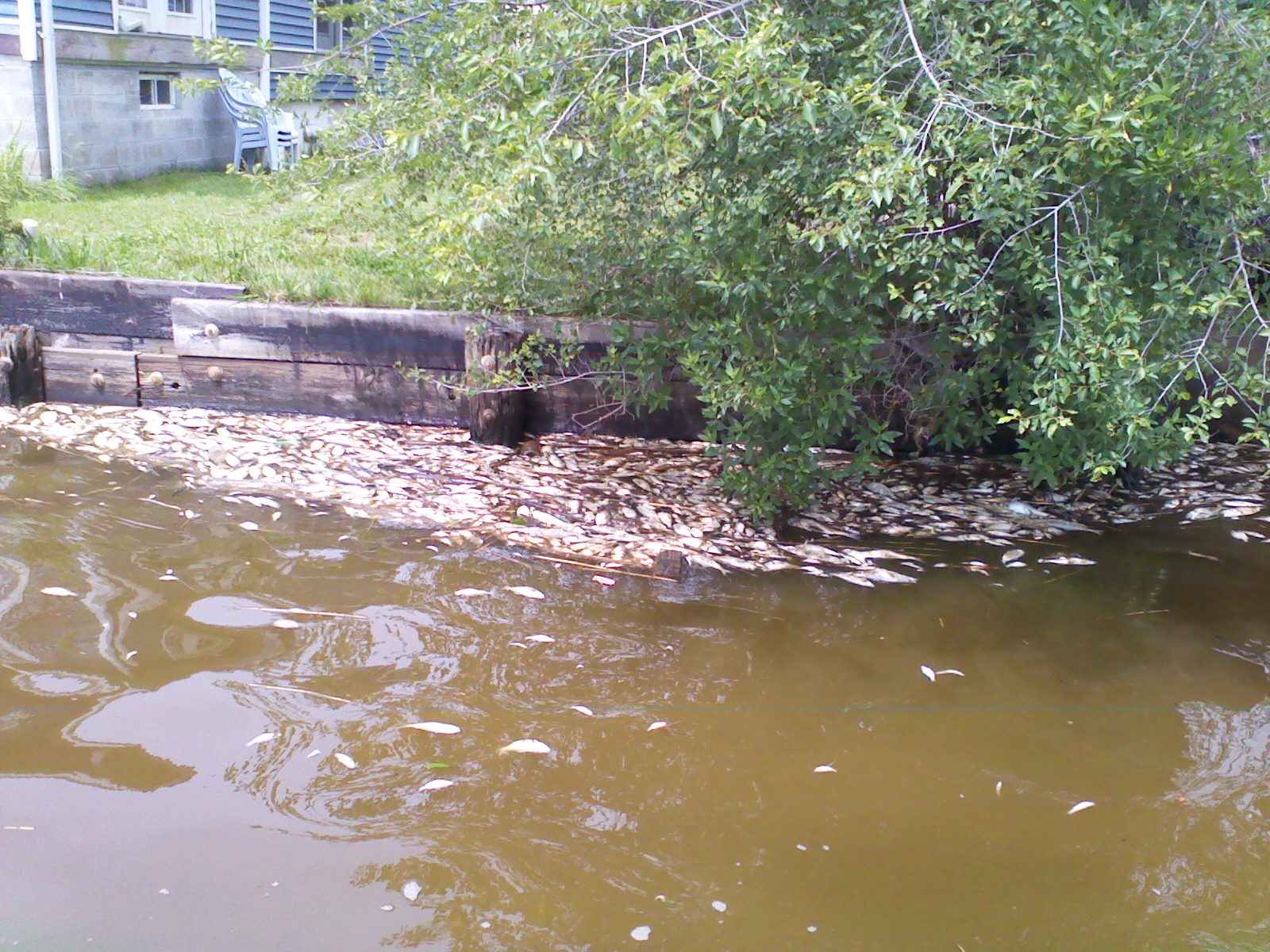|
Click on photo to view larger image



|
When fish began dying in late May in the creeks that feed the Patapsco River, MDE biologists had a pretty good idea of what was to blame. They had been monitoring an unusually large algae bloom for months -- and this “mahogany tide” quickly became the prime suspect.
More than 100,000 fish would eventually die in the Patapsco River basin, including Baltimore Harbor, as a result of the algal bloom’s die off. Although unusual weather events are believed to have contributed to the algae bloom, the fish kill seemed to lend urgency to the need to reduce pollution to the Chesapeake Bay and local waterways.
Since early May, MDE has investigated more than 20 fish kill events, involving at least 108,000 dead fish. Thirteen were caused by low dissolved oxygen induced by a sudden die-off of an earlier algae bloom and eight were caused by a combination of commercial discards and poor water quality. Others were caused by spawning stress, high pH, pond mismanagement or pesticide application. In one case, the cause was unknown.
The late May fish kill in the Patapsco River basin was by far the largest of the season. The algal bloom die-off caused a high biological oxygen demand as the algae biomass decomposed and fell through the water column. The bloom consisted of a routine, non-toxic spring-blooming algal species, Prorocentrum minimum, commonly known as a mahogany tide for the way it casts a brownish hue in water. Due to the magnitude of the bloom, oxygen levels in many areas approached or reached zero. Other aquatic species were also affected, including blue crabs and shrimp.
Although much of the area had recuperated by early June, anaerobic (no oxygen) conditions continued at the surface in and around the Inner Harbor. Intense storms on June 1 are believed to be responsible for forcing much of the oxygen-depleted bottom element to the surface, which induced a strong hydrogen sulfide odor that was extensive and persisted for several days. It is likely that this condition was exacerbated by pre-existing anaerobic conditions in the lower depths of the water column.
The P. minimum bloom this year was exceptionally high, when compared to previous years. The intensity of spring P. minimumblooms in the Chesapeake Bay varies each year depending mainly on the level of nutrients available in the water column. Other major factors include light intensity and temperature. Excess nutrients originate from three general sources:
-
Nutrients (nitrogen, phosphorus and organic material) enter the water through stormwater run-off, waste water treatment plant discharges, leaking sewage infrastructure, septic systems, agricultural runoff and industrial sources
-
Nitrogen and organic nutrients are periodically reintroduced to the surface by bottom water during naturally occurring mixing of these layers
-
Nitrogen also originates from atmospheric deposition.
During 2011, extreme storm run-off events associated with Hurricane Irene and Tropical Storm Lee, in association with a very warm winter, a March sewage spill in the Patapsco, and nutrient releases during Harbor dredging activities contributed to the excess nutrients available for this year’s algal bloom.
Reducing nutrient sources would minimize the occurrence of fish kills. The U.S. Environmental Protection Agency has established a total maximum daily load (TMDL), often referred to as a “pollution diet,” to reduce nitrogen, phosphorus and sediment inputs throughout the multi-state Chesapeake Bay watershed area and help to restore and protect Bay water quality. Maryland is working with local governments to develop and implement Maryland’s Watershed Implementation Plan(WIP) – the most comprehensive plan yet to restore the Bay.
|
